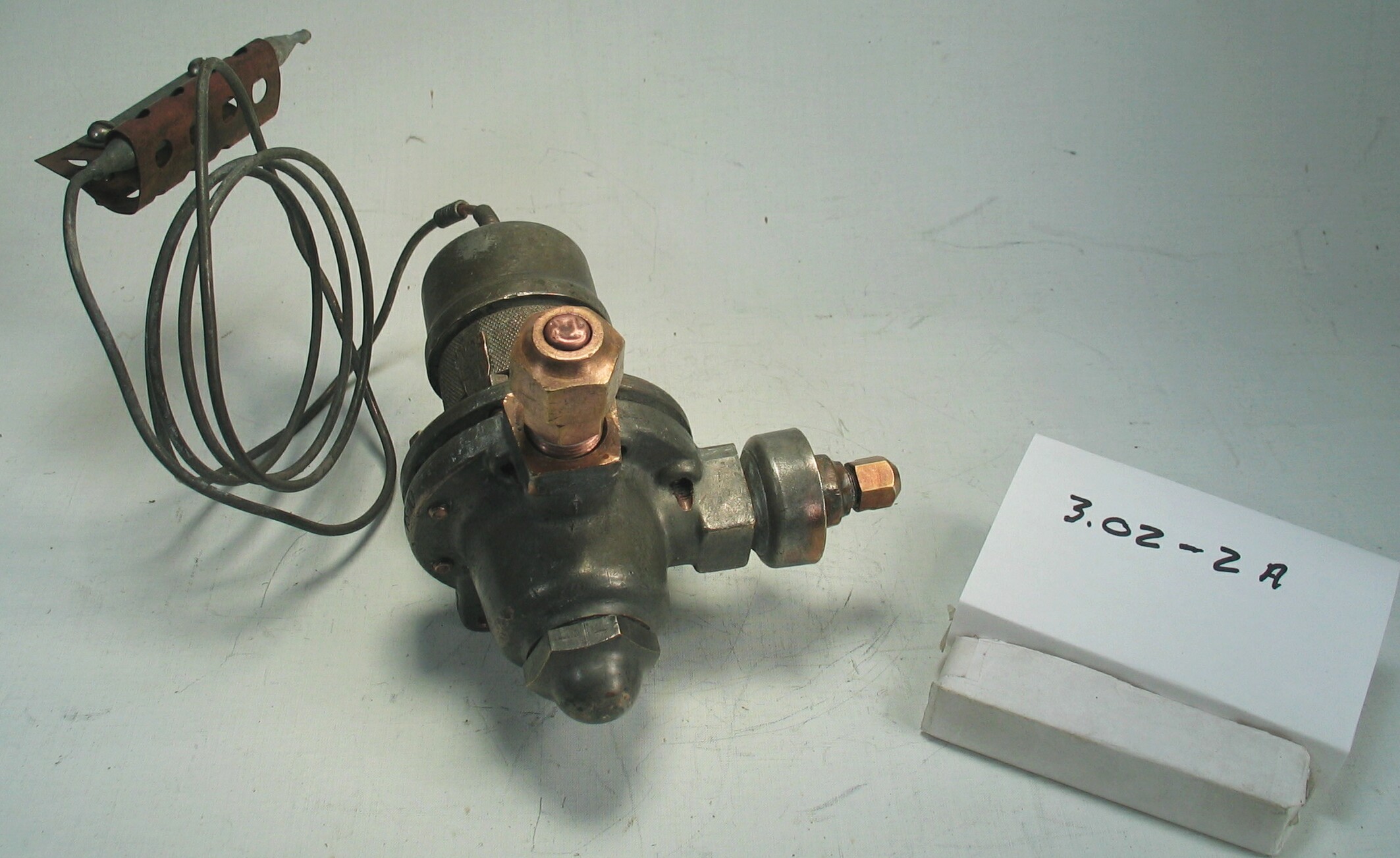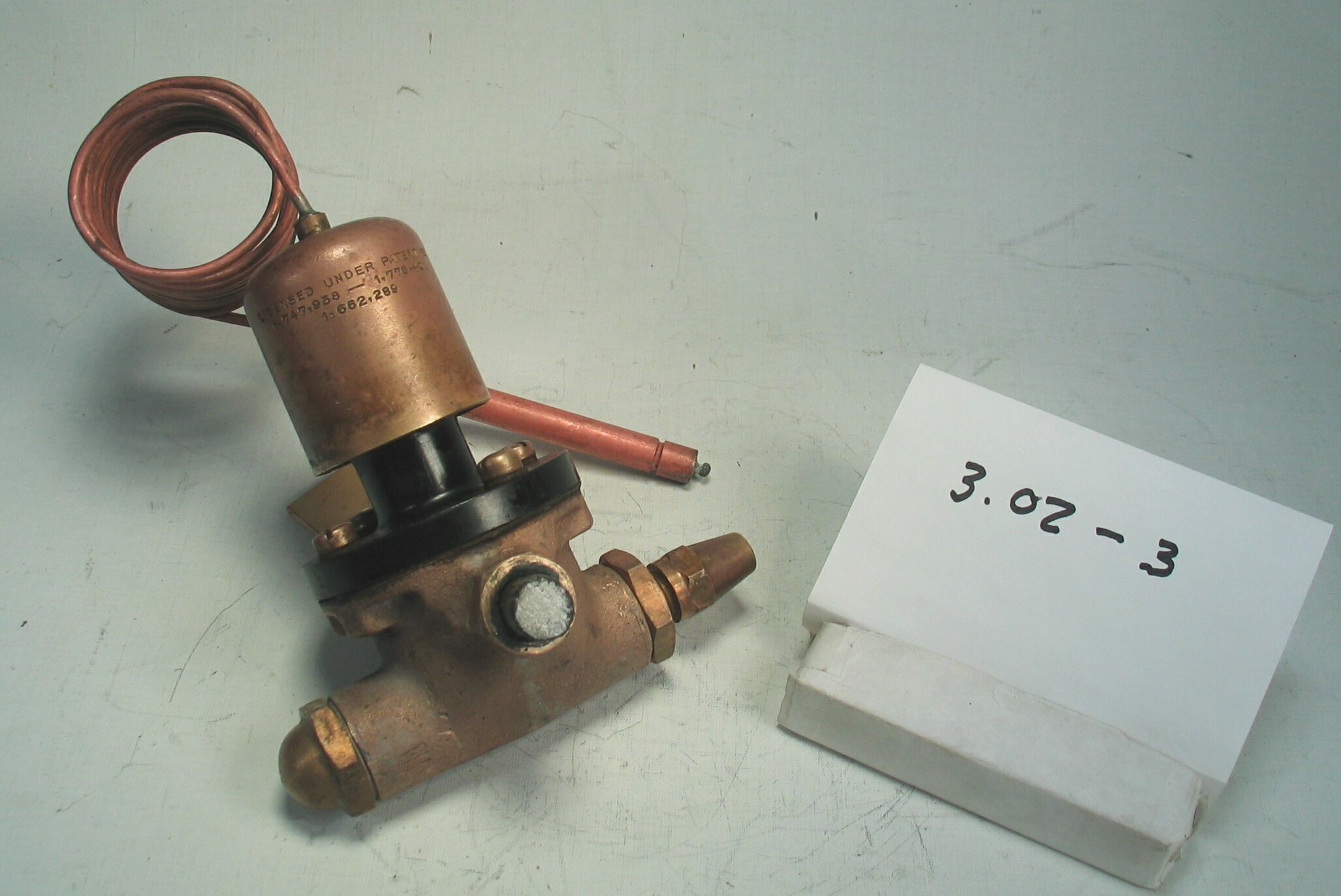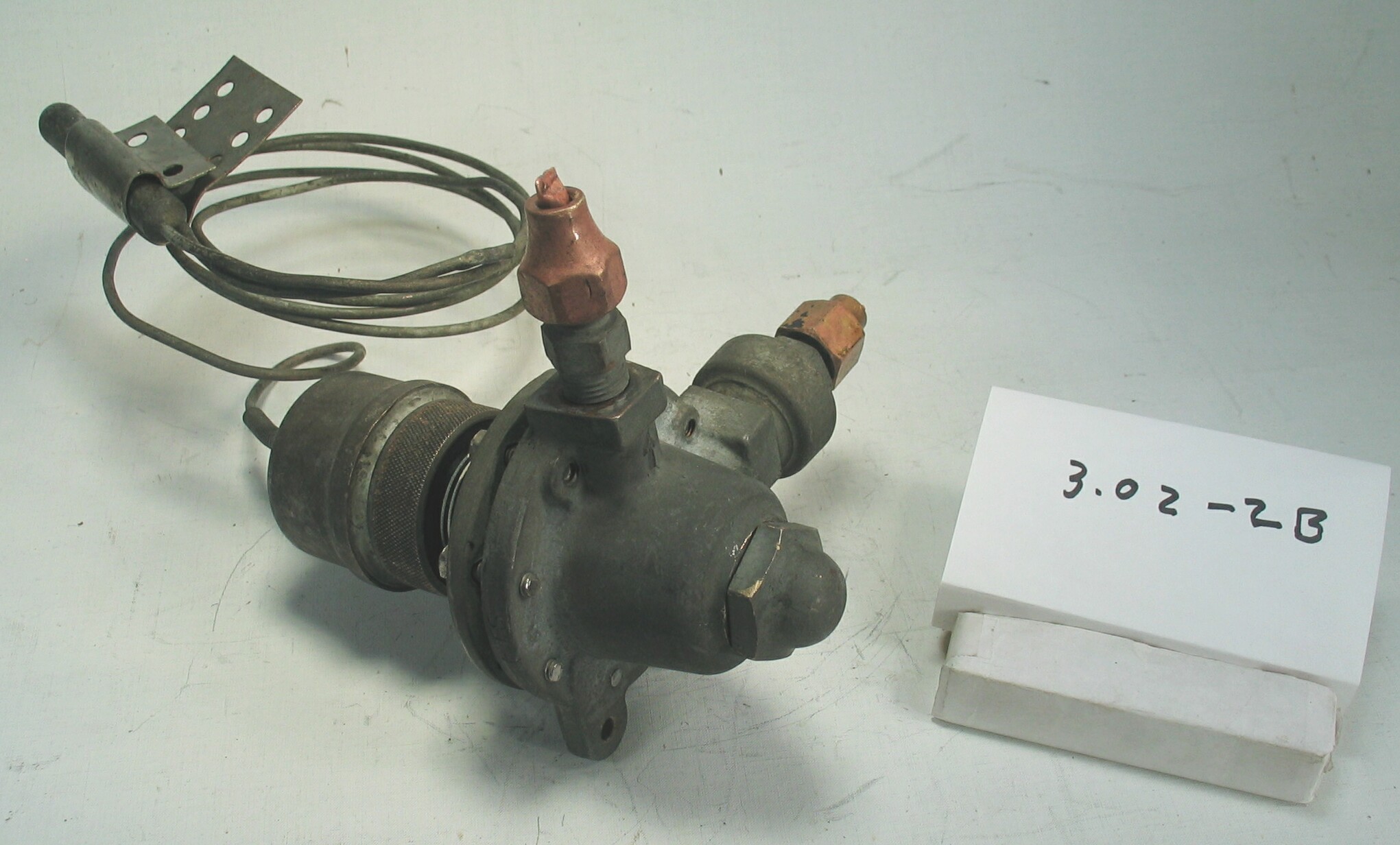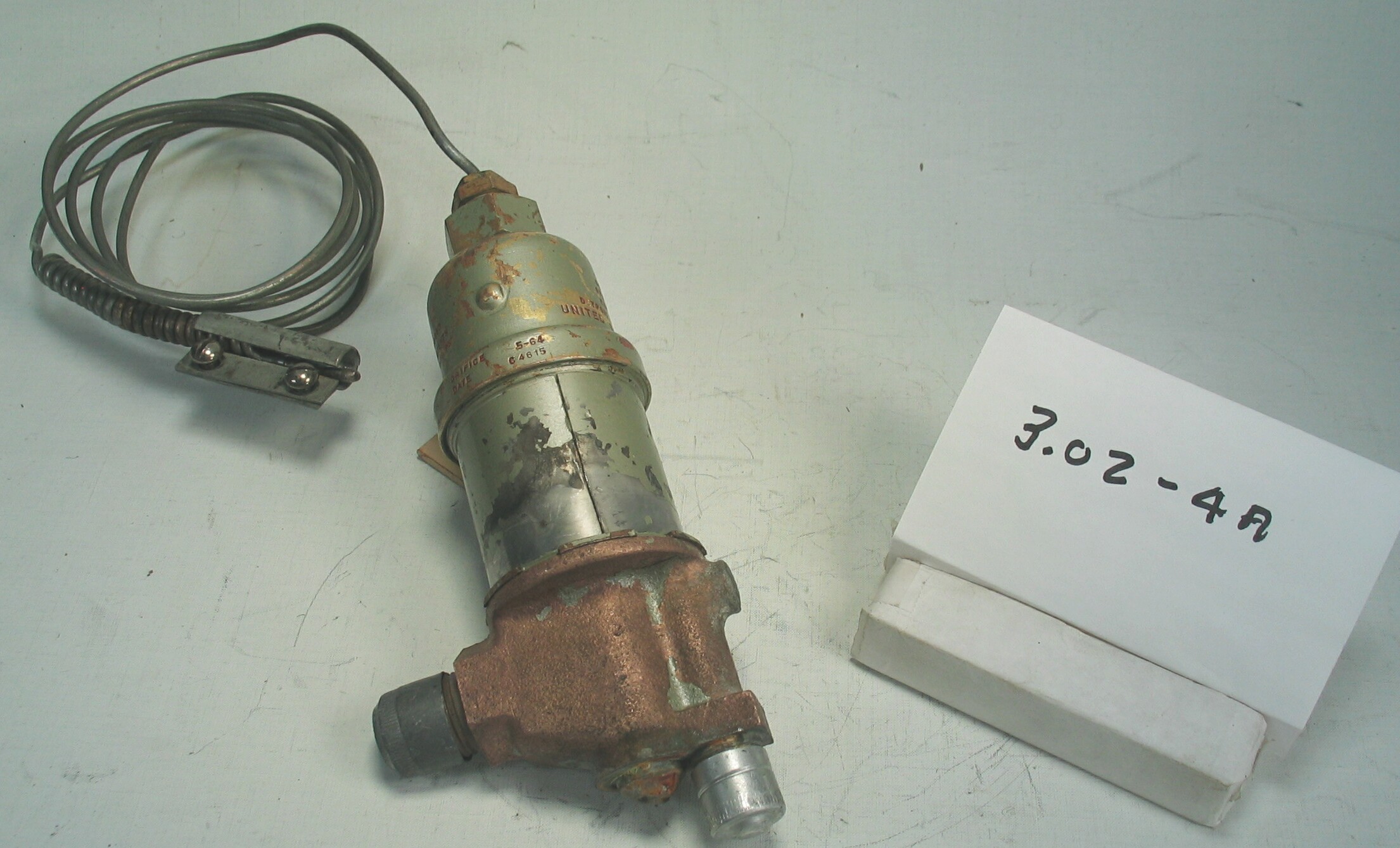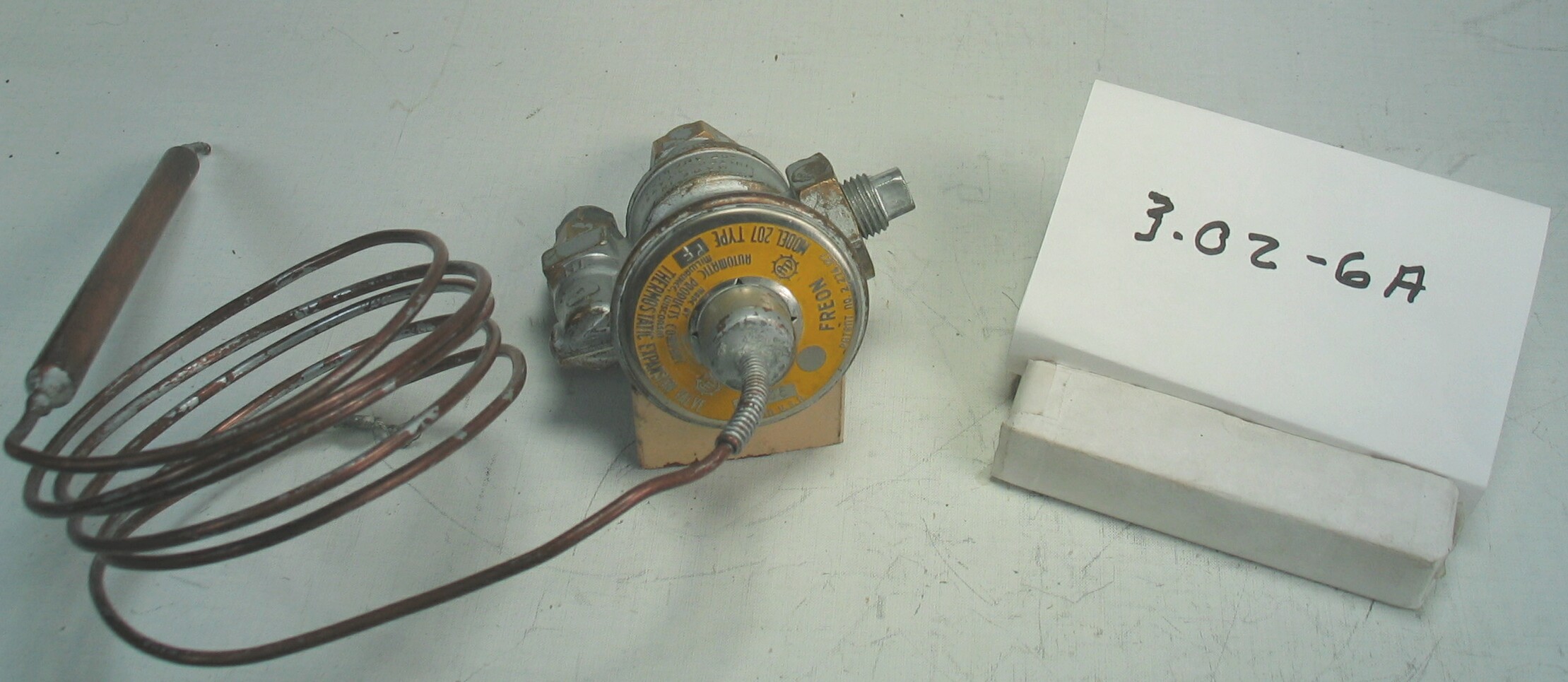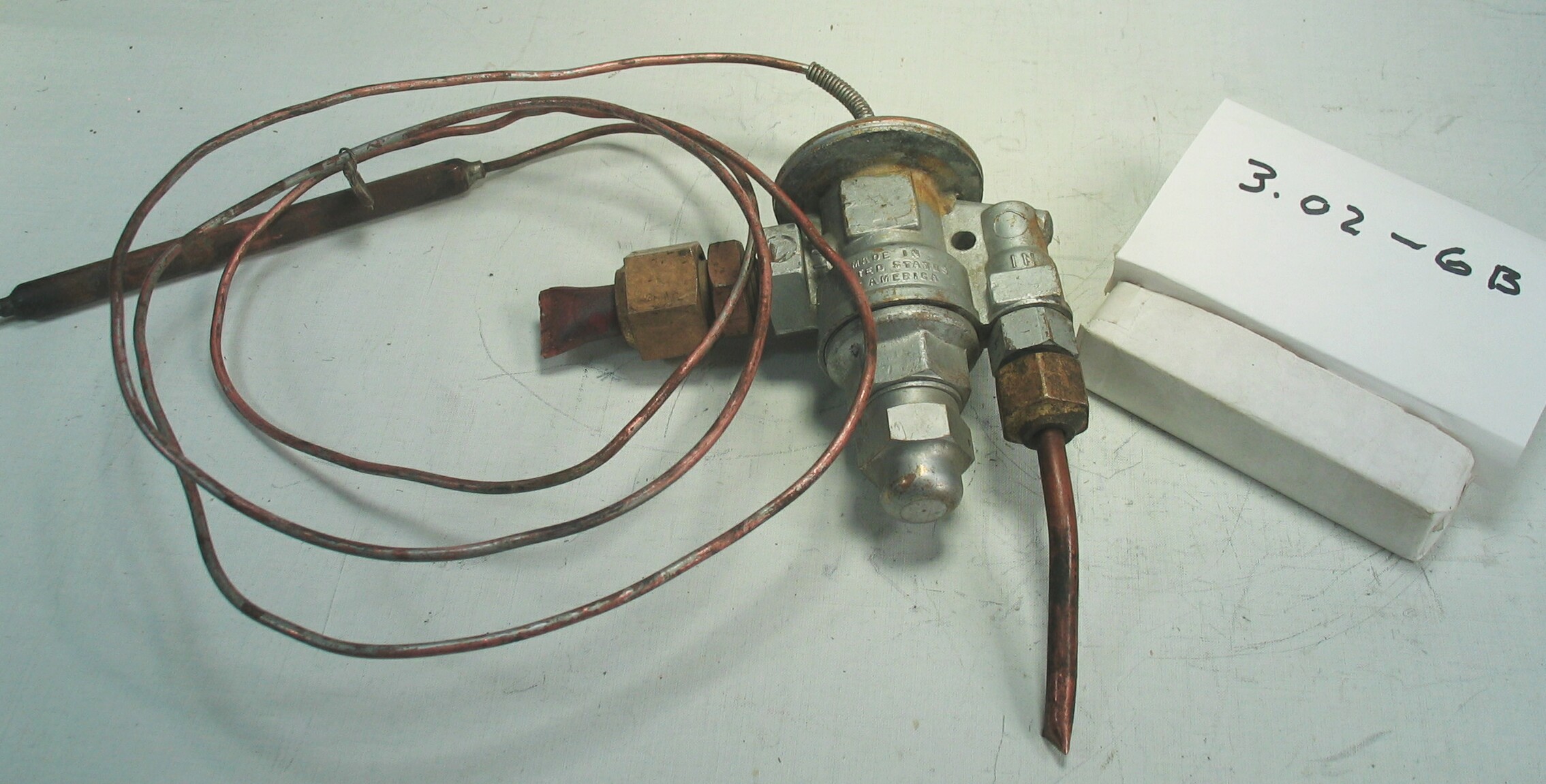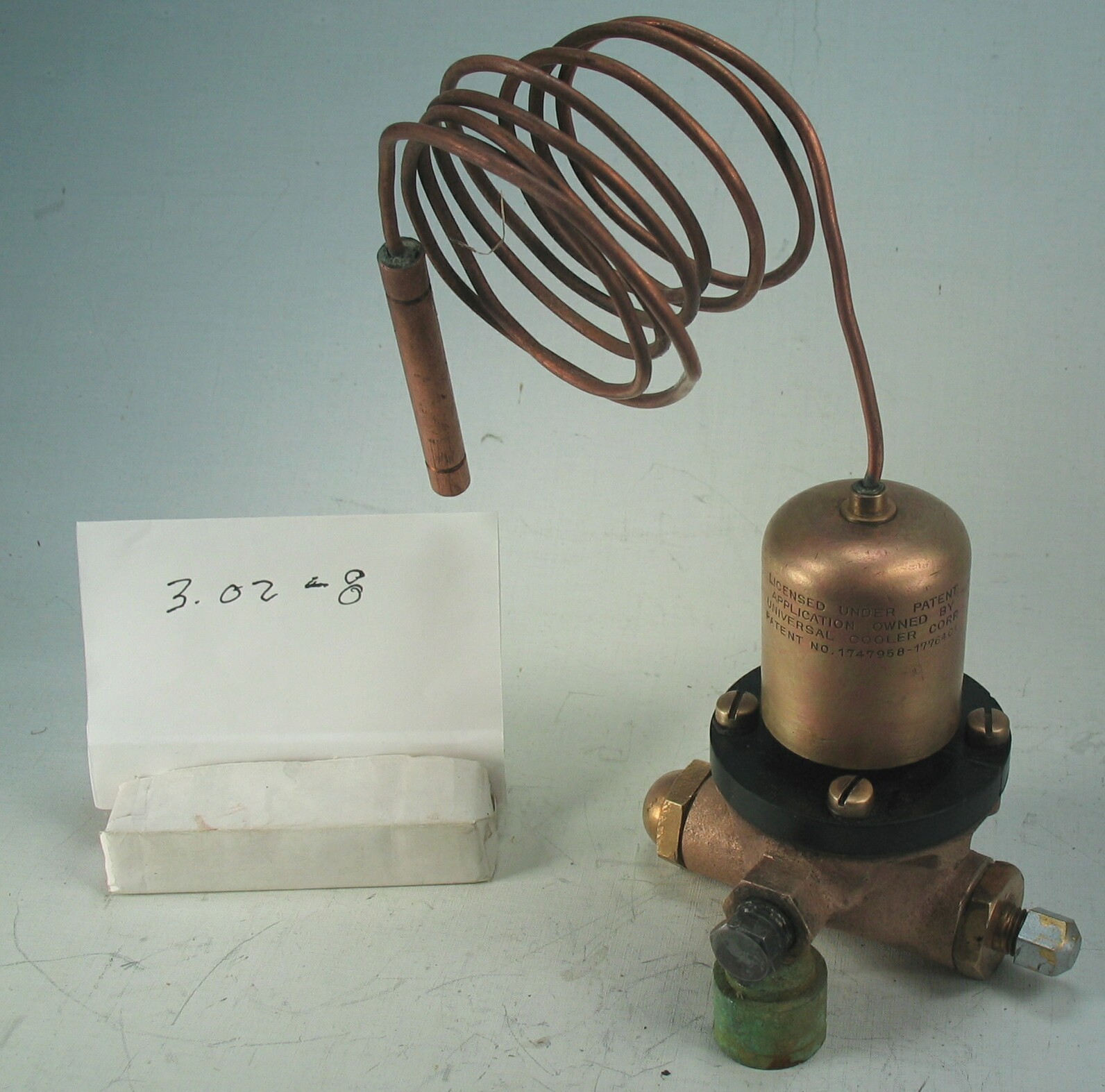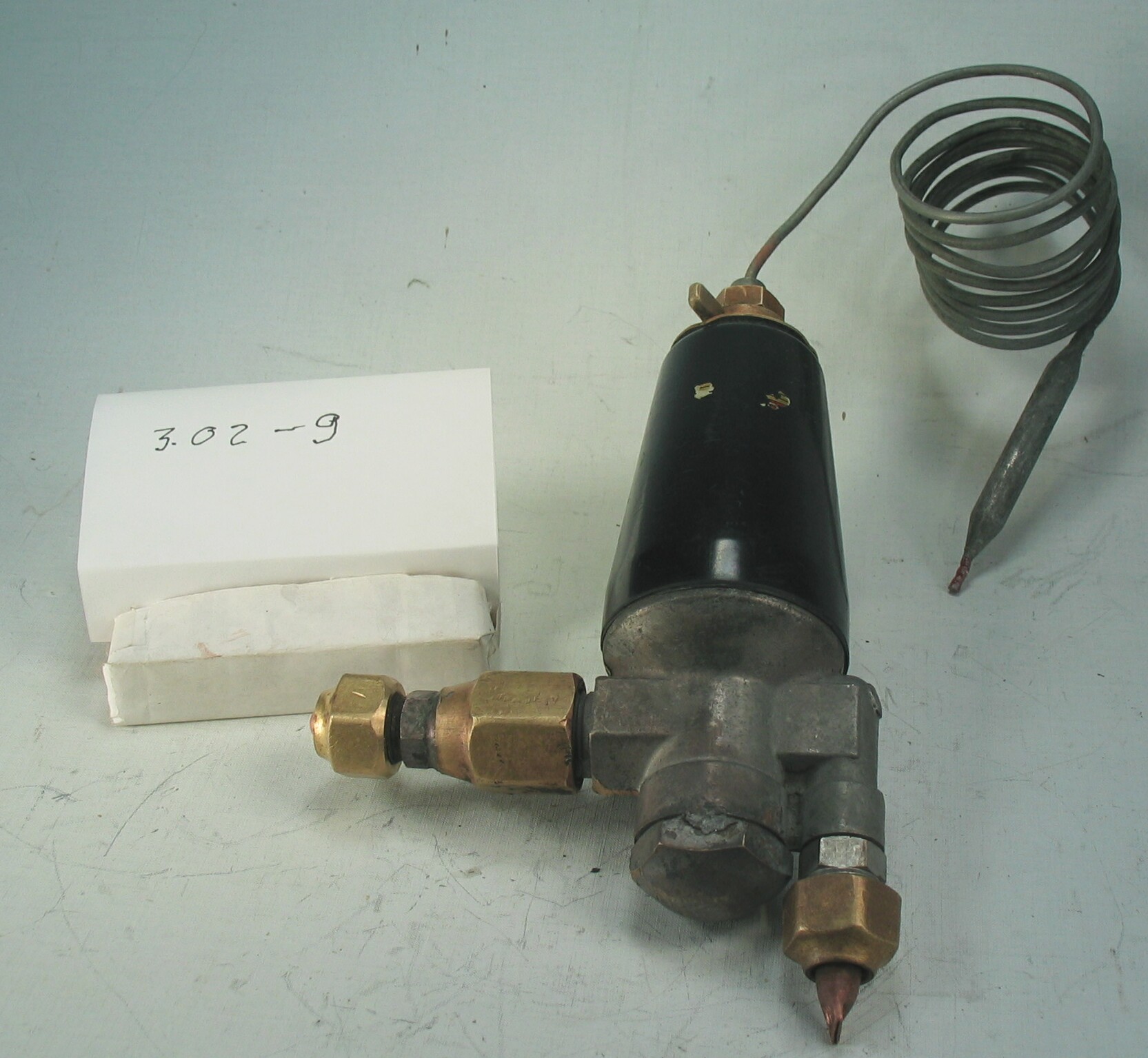3.02-12: Frigidaire 1936 Thermostatic Expansion Valve
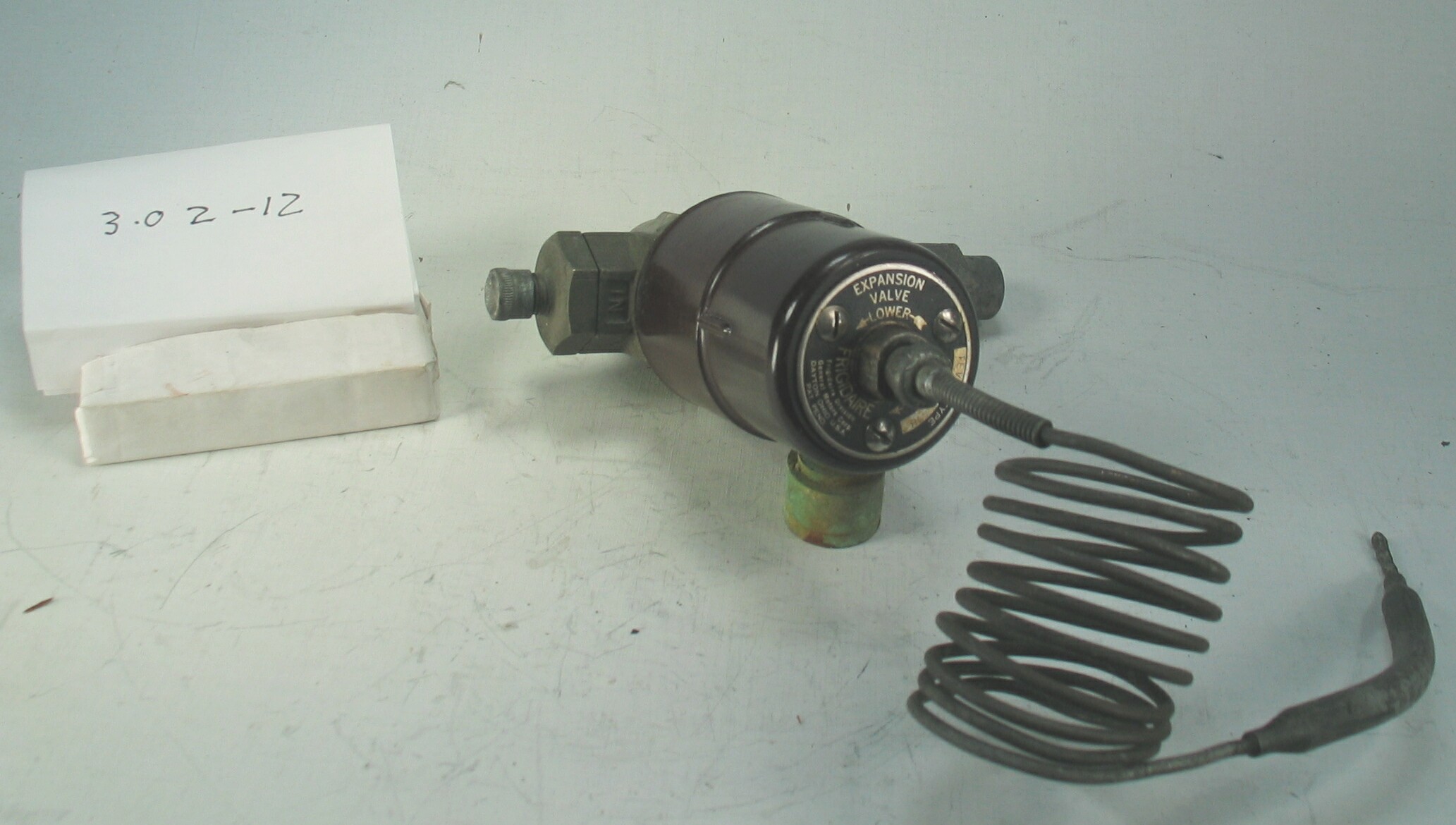
| HHCC Accession No. 2006.082 | HHCC Classification Code: 3.02-12 |
|---|
Description:
An early mid 20th century, adjustable thermostatic expansion valve, housed in a 4 lb. solid cast brass body with galvinized overcoat and classic brown Bakelite casing; thermal power element and 4 ft. capillary tube; the TEF series, engineered for the new Freon 12 as well as SO2 applications, superseded the TS series, being more compact and better sealed against moisture; recommended for multiplexed applications popular in the period; Model TEV, Frigidaire, circa 1936. [1 of a set of 2, see ID# 207]
Group:
3.02 Refrigerant Flow Controls - Commercial
Make:
Frigidaire
Manufacturer:
Frigidaire Division General Motors Corporation, Dayton Ohio
Model:
TEV, Series 18
Serial No.:
Size:
6 x 2 x 10 in. h
Weight:
4 lbs.
Circa:
1936
Rating:
Exhibit, education, and research quality, illustrating the engineering design, construction, and operating principles, of an early mid 20th century thermostatic expansion valve produced by Frigidaire, a publicly acknowledged leader in the field at the time.
Patent Date/Number:
Provenance:
From York County (York Region) Ontario, once a rich agricultural hinterlands, attracting early settlement in the last years of the 18th century. Located on the north slopes of the Oak Ridges Moraine, within 20 miles of Toronto, the County would also attract early ex-urban development, to be come a wealthy market place for the emerging household and consumer technologies of the early and mid 20th century.
This artifact was discovered in the 1950’s in the used stock of T. H. Oliver, Refrigeration and Electric Sales and Service, Aurora, Ontario, an early worker in the field of agricultural, industrial and consumer technology.
Type and Design:
Inlet strainer Fully serviceable power element 4 ft capillary line
Construction:
Cast brass body with, classic for the period, brown Bakelite casing
Material:
Special Features:
Accessories:
Capacities:
Performance Characteristics:
Operation:
Control and Regulation:
Targeted Market Segment:
Consumer Acceptance:
Merchandising:
Market Price:
Technological Significance:
Adapted for the new generation of non-noxious, hydrocarbon refrigerants, this early mid 20th century TX valve by Frigidaire was more compact and better protected from moisture than its earlier TS series [see ID# 185 & 186]. It was promoted by Frigdaire for multiplexed systems and would find wide spread application in a new generation of small , commercial refrigeration to be found in a new generation of food stores and confectioneries.
This artifact of history tells the many stories of technological diffusion and wide spread adoption of TX refrigerant flow control technology. After a brief flurry of excitement over the use of costly and delicate float operated devices, as a more efficient means of flow control, industry engineers would return to the automatic expansion valve in the early 30’s. But for many medium and larger applications the automatic expansion valve would give way to the more elegant and efficient thermostatic valve for use in a new generation of ‘dry evaporator’ applications.
Industrial Significance:
Of special significance is the appearance of General Motors name on the valve, marking the period in which large manufactures, having built significant engineering and manufacturing know-how, as well as cash reserves would move into new fields. Horizontal integration would soon become a bus word in the industrial world.
These valve would see service well into the 1950’s attesting to their robust construction and field serviceability, with an operating life of 20 to 30 years and more.
Socio-economic Significance:
Socio-cultural Significance:
The socio-cultural significance of the impact of the unobtrusive, thermostatic expansion valve on life in Canada, throughout the latter part of the 20th century, would be hard to over-estimate. It would become the quintessential, automated refrigerant flow regulating device for most medium and larger commercial refrigeration applications, found in confectioneries, food stores and ware houses. It would help to make possible the wide array of foods and confectionery products Canadians would come to enjoy, as part of the late 20th century Canadian life experience.
Donor:
G. Leslie Oliver, The T. H. Oliver HVACR Collection
HHCC Storage Location:
Tracking:
Bibliographic References:
Installation and Service Manual, SER,_405, For Products Manufactured Prior to 1937, Frigidaire Division, General Motors Corp. Dayton Ohio
